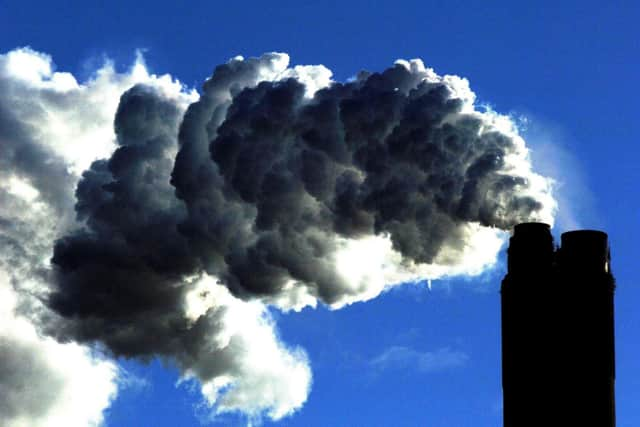Natural and technological solutions must be used together to tackle climate change , think tank report finds
The report, from the Energy Transitions Commission (ETC), concludes that active removal of carbon dioxide by both natural and technological methods will be necessary on top of decarbonisation if the world is to avoid overshooting allowable emissions levels and staving off the worst impacts of climate change.
It warns that “even with the most ambitious possible reduction in gross emissions, it is almost certain that cumulative CO2 emissions between now and 2050 will exceed the carbon budget consistent with a 1.5C climate objective”.
Advertisement
Hide AdAdvertisement
Hide AdThe United Nations Intergovernmental Panel on Climate Change recommends that emissions must be reduced to around net zero by mid-century, with cuts of 40 to 50 per cent by 2030.


It suggests cumulative emissions between 2020 and 2050 must be limited to 500 gigatonnes to have a 50:50 chance of restricting temperature rise to 1.5C.
To achieve this, the ETC argues that a “portfolio” of techniques that remove emissions will be “essential”, utilising a combination of natural carbon sinks such as forests and peatlands, engineered methods like direct air capture of emissions and hybrid systems such as bioenergy plants with carbon capture and storage.
This would come on top of moves to clean energy and other green measures aimed at lowering emissions.
Projections by the ETC suggest these could together deliver 165 gigatonnes of removals between now and 2050, and in excess of the three to five gigatonnes a year likely to be required to offset residual emissions that cannot be avoided going forward.
The report states: “While the precise scale of removals required will depend on future success with emissions reduction, it is clear that carbon dioxide removals at significant scale are essential.”
But it warns that the costs of carbon removal will be significant, with a major increase in investment needed to get projects up and running as quickly as possible.
Financial flows of $200 billion (£153 billion) per annum by 2030 could be required, a 20-fold increase from around $10 billion (£7.6 billion) currently being spent on removals.
Advertisement
Hide AdAdvertisement
Hide AdA significant proportion of this could be financed by companies but governments will need to play a “major role”, the report says.
"We are running out of time,” said ETC chair Lord Adair Turner.
“The planet has to date warmed by 1.1C to 1.2C, with significant adverse effects already being seen.
“This report is simply making explicit that there is almost no course of emissions reductions that will give us a 100 per cent chance of staying on target.
“Our view is that carbon dioxide removals are necessary and must be in addition to, not instead of deep and rapid reductions.
“They must be complementary and cannot be an excuse for companies to avoid decarbonisation.
“We need to accept that both are required, then we can get on with it.
“There needs to be a focus on removals or we are not going to get there in time.
Advertisement
Hide AdAdvertisement
Hide Ad“A portfolio of techniques will be required as there is no single solution that could scale up fast enough.”
A message from the Editor:
Thank you for reading this article. We’re more reliant on your support than ever as the shift in consumer habits brought about by coronavirus impacts our advertisers.
If you haven’t already, please consider supporting our trusted, fact-checked journalism by taking out a digital subscription.
Comments
Want to join the conversation? Please or to comment on this article.
